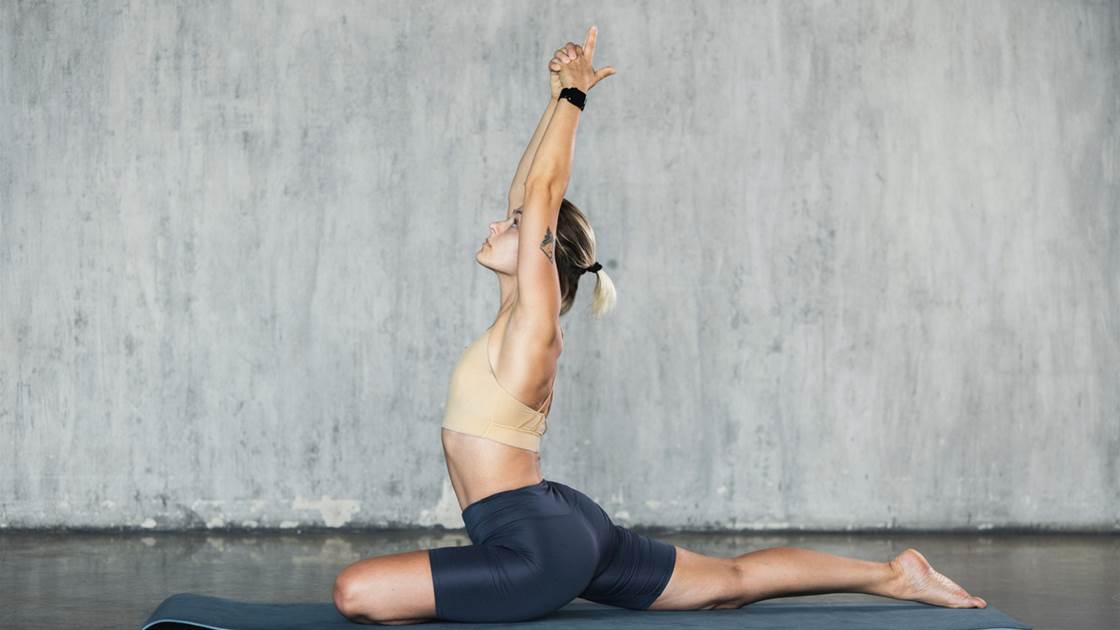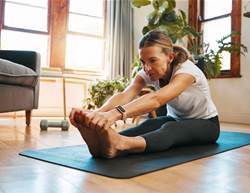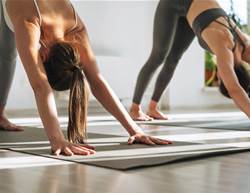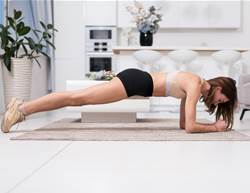We often think of stretching as something you do before a workout—or something you know you should do, but rarely get around to. But stretching is one of the most effective, underrated ways to support joint health at any age or activity level. Whether you wake up stiff, deal with chronic aches, or just want to move more freely through your day, stretching can help keep your joints flexible, strong and pain-free.
Joints are the connections between your bones. They’re supported by muscles, tendons and ligaments that all work together to help you move smoothly. Over time, these tissues can tighten or lose elasticity from ageing, injury, overuse or too much time spent sitting. The result? Reduced mobility, stiffness, inflammation and sometimes even pain. And when joints don’t regularly move through their full range of motion, cartilage can start to wear down—raising your risk of osteoarthritis and other degenerative issues.
Women are especially prone to joint pain and stiffness, says physiotherapist Maura Daly Iversen. In fact, it is estimated that by 2040, two-thirds of people living with arthritis will be women.
The good news? Gentle, consistent stretching can help slow—and even reverse—some of that decline. “Regular activity keeps joints nourished and lubricated and strengthens the muscles and tendons that protect them,” says orthopaedic surgeon Dr Kathy Weber
You don’t need to spend hours or master yoga poses either. A few minutes of mindful movement can improve your flexibility, balance and comfort, while helping you support your hips, knees, shoulders and back long-term. Stretching also gives you a chance to slow down, calm your nervous system and sneak in a little self-care.
How to warm up your joints before activity to reduce injury risk
Think of your joints like the hinges on a door—if you don’t move them regularly or warm them up gently, they can get creaky, stiff and prone to wear. Before any physical activity—even something low-impact like a walk—it’s essential to prep your joints with a short, targeted warm-up. This boosts circulation to the surrounding muscles, helps synovial fluid (your joints’ natural lubricant) flow more freely and reduces the chance of injury.
Start with five to ten minutes of light, rhythmic movement: marching in place, shoulder rolls, torso twists or gentle arm and leg swings. These dynamic exercises aren’t just for gym junkies—they’re for everyone, especially if you’re feeling tight or have been sitting for hours. Gradually ease into bigger ranges of motion, and focus on smooth, controlled movements. The goal is to feel more limber and alert, not exhausted. Done consistently, this simple habit can make a big difference in how your joints feel during and after activity.
Targeted stretches for common joint trouble spots
Some joints bear the brunt of daily life more than others. Whether it’s neck tension from scrolling, a tight back from sitting, or creaky knees after walking up the stairs, certain joints deserve a little extra TLC. Targeted stretching can release built-up tension, increase mobility and help keep you moving with ease. Here’s how to gently stretch the most common hot spots without overdoing it:
Neck
If your neck feels stiff or sore, slow, mindful stretches can make a noticeable difference. Start with gentle neck rolls—drop your chin to your chest, then roll your head slowly from shoulder to shoulder in a half-circle motion. Follow with side-to-side tilts, bringing your ear toward your shoulder without lifting the shoulder. Keep movements smooth and small. Avoid sharp turns or forcing the motion—this area responds best to calm, controlled stretching.
Back
Whether you’re waking up with a stiff lower back or feeling tight after sitting too long, a couple of simple stretches can ease tension quickly. A seated spinal twist—done in a chair or on the floor—can help mobilise your spine. Just make sure to keep the movement gentle and focus on your breath. For more release, try child’s pose: kneel on the floor, stretch your arms out in front of you and lower your torso between your knees. Let your head rest and breathe into your back.
Hips
Stiff hips can throw off your posture and affect how your whole body moves. To open them up, try a figure-four stretch: lie on your back, cross one ankle over the opposite thigh, and gently draw your legs in toward your chest. You can also do slow hip circles while standing—place your hands on your hips and move them in a circular motion to warm up and release the joint. These moves help create space in the hips and loosen surrounding muscles.
Knees
The key to happy knees is supporting the muscles around them. Tight calves or quads can pull on the joint and lead to discomfort. For your quads, try a standing quad stretch: grab your ankle behind you and gently pull it towards your glutes, keeping knees aligned. For calves, stand facing a wall, place your hands on it and step one foot back—press your heel down until you feel a stretch through the lower leg. Hold each stretch for 20–30 seconds and repeat on both sides.
Expert tips on how to stretch safely
Stretching should feel good—not painful. The goal is to create gentle length in your muscles and joints, not to force them past their limit. The key is consistency over intensity. A little regular movement goes further than pushing hard once in a while.
Aim for a mild, comfortable tension as you stretch. Stop if you feel sharp pain, numbness, or tingling—these are signs you’ve gone too far. Always move slowly and with control, and avoid bouncing or jerking through positions, which can strain muscles and soft tissue.
If you live with arthritis or are recovering from an injury, it’s best to go even slower. Consider working with a physio to help you adapt stretches for your body. They can recommend modifications that protect sensitive joints while still improving mobility.
Try holding each stretch for 15 to 30 seconds, and focus on your breathing as you go. Deep, steady breaths help your nervous system relax, making your body more responsive to the movement. Think of stretching as a conversation with your body, not a tug-of-war—gentle, regular practice will lead to better flexibility and fewer aches over time.
Simple routines you can do in the morning, at your desk or before bed
You don’t need a full workout to support your joint health. Just a few minutes of focused stretching throughout the day can ease tension, improve flexibility and help you feel more mobile and comfortable—no gym required. Try these easy routines to fit into your everyday life:
Morning
Wake up your body with a gentle sequence that helps ease overnight stiffness and primes your joints for the day ahead. Start with a few slow cat-cow stretches to mobilise your spine, then add in standing side bends and gentle spinal twists to wake up your torso and improve circulation. These stretches are especially helpful if you tend to wake up with tightness in your back, shoulders or hips.
At your desk
Sitting for hours can cause muscles to tighten and joints to stiffen—especially in your neck, hips and lower back. Break the pattern with short movement breaks at your desk every hour. Try a few shoulder rolls, neck tilts, and seated hip openers (like crossing one ankle over the opposite knee while seated). Even just standing up to stretch your arms overhead and roll out your wrists can help reset your posture and boost blood flow.
Before bed
A calming stretch session can help you let go of the day’s stress and prepare your body for restful sleep. Slow, forward folds release the back of the body, while gentle supine twists help decompress the spine. Recline into butterfly pose (soles of feet together, knees out wide) and focus on deep, steady breathing to calm the nervous system. Just 5–10 minutes of movement before bed can make a real difference to how your body feels when you wake up.










